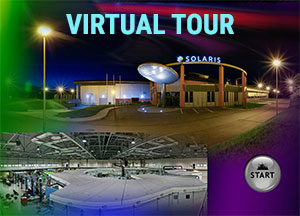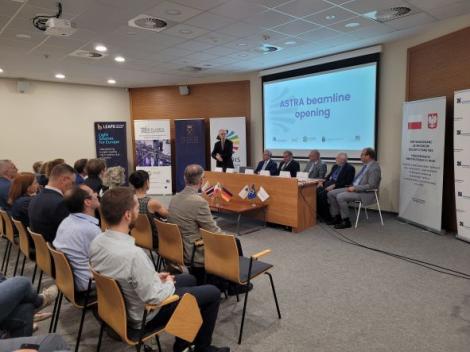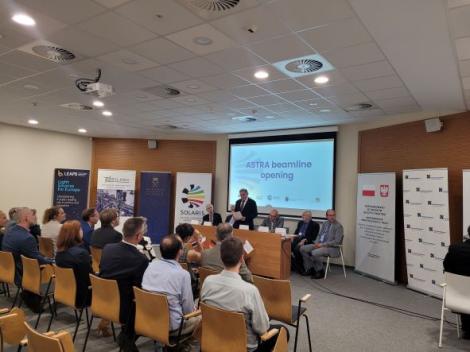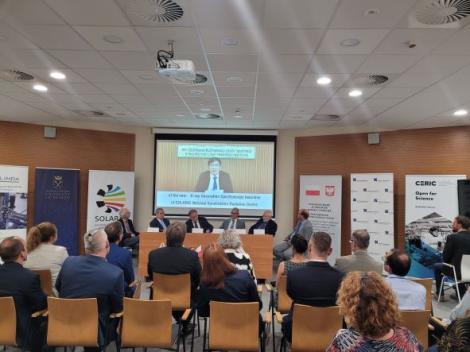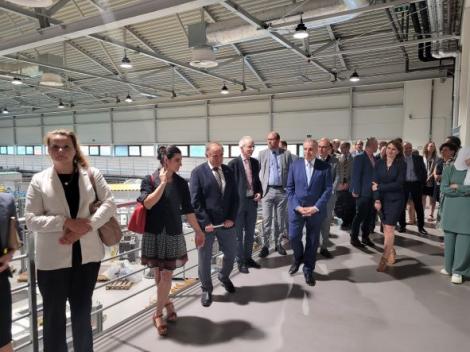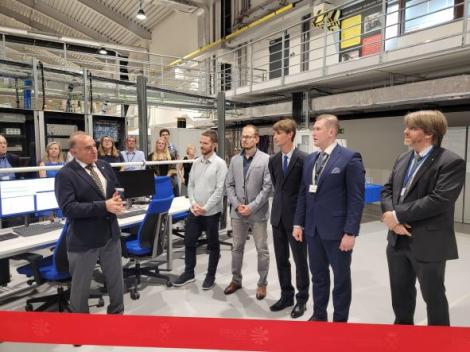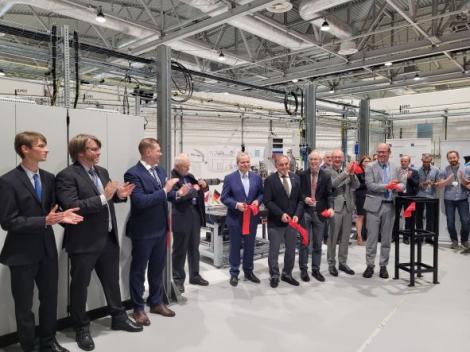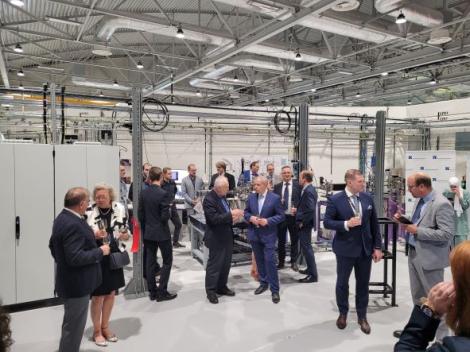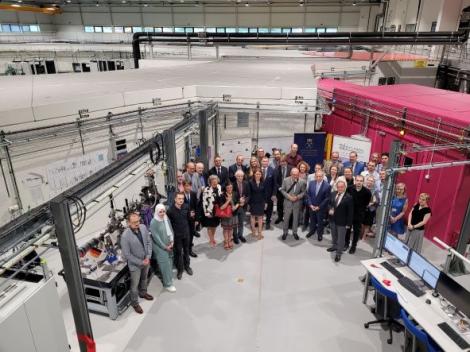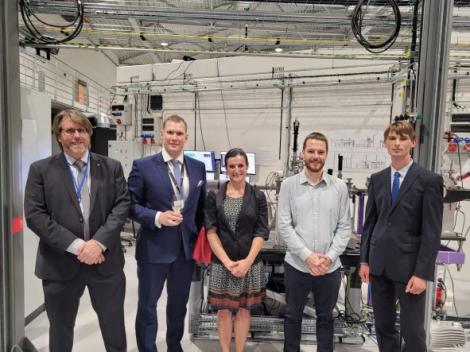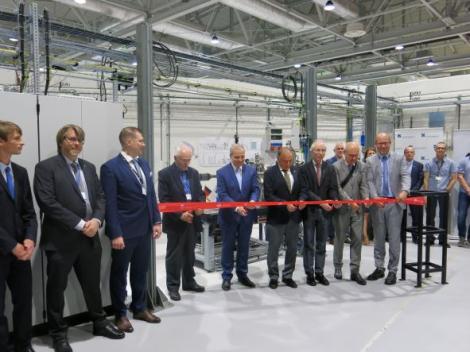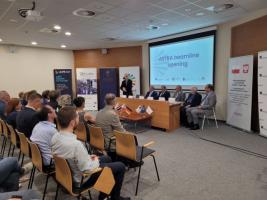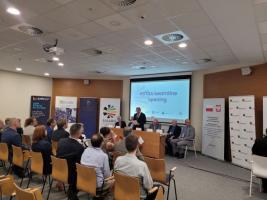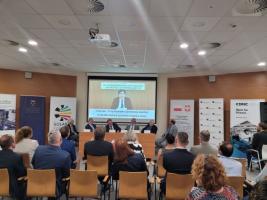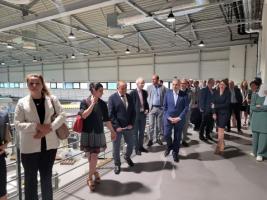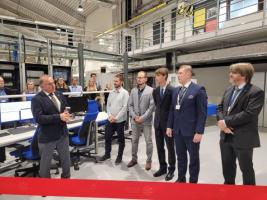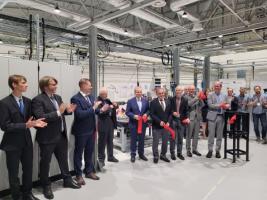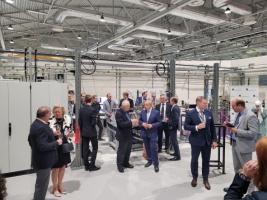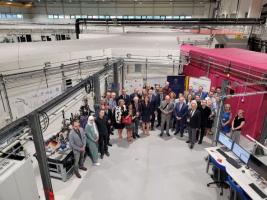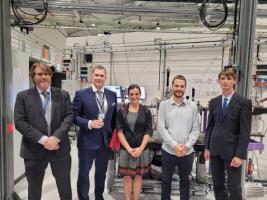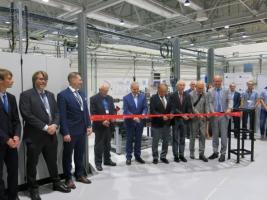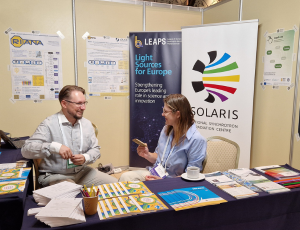 Web Content Display
Web Content Display
SOLARIS centre
 Web Content Display
Web Content Display
Opening Ceremony for the new ASTRA (SOLABS) beamline
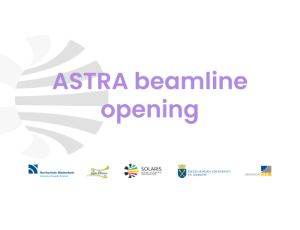
On 29 June 2022, the official opening ceremony was held for the ASTRA beamline (formerly SOLABS), a beamline dedicated to measurements using X-ray absorption spectroscopy (XAS) in the energy range of 1 keV to 15 keV. The ceremony was attended by a number of distinguished guests along with the international team involved in building the beamline.
International cooperation is the key to success
The ASTRA beamline was created thanks to the cooperation of 4 scientific institutions, the Hochschule Niederrhein University of Applied Sciences (Germany), Synchrotron Light Research Institute (Thailand), the Institute of Physics at Bonn University (Germany), and the SOLARIS Center. The high representatives of these institutions and all those involved in the ASTRA beamline project came to Krakow for the opening ceremony. A warm gesture of the SLRI Synchrotron in Thailand was the sending of the official congratulations by SLRI Director Prof. Saroj Rujirawat in the form of a video, which was screened during the ceremony. In addition, the ceremony was graced by the presence of German Consul General Dr. Michael Groß and representatives from the world of science and industry. More than 25 scientists and technicians were involved in the entire project of the beamline's creation and further development, and the work was coordinated by Prof. Josef Hormes (University of Bonn), Prof. Alexander Prange (Hochschule Niederrhein), Dr. Wantana Klysubun (SLRI), and from the SOLARIS side by Dr. Alexey Maximenko and Dr. Marcin Zajac.
The course of the opening ceremony
The ceremony began with a welcome to the guests by Prof. Marek Stankiewicz, Director of the SOLARIS National Synchrotron Radiation Center.
The representative of Jagiellonian University, Prof. Stanislaw Kistryn, spoke about the smooth and trouble-free course of cooperation, which can be an example for the world. The Rector of Hochschule Niederrhein, Dr. Thomas Grünewald, also gave his speech, praising all those involved in the project and especially emphasizing the speed of the project. The Consul General of Germany, meanwhile, said that "science itself is international in nature" and called for closer cooperation, openness, and dialogue. "This is a truly European research space for the development of science allowing to jointly conduct advanced research” he said.
Prof. Josef Hormes, a world-class XAS specialist, gave an interesting lecture on the potential capabilities and applications of the ASTRA beamline and explained why the line is so unique and special.
Guests at the event had the opportunity to tour the experimental hall and learn more about the research conducted at the synchrotron. The highlight of the meeting was the ribbon-cutting ceremony at the ASTRA beamline in the experimental hall. This was followed by a toast and commemorative photos were taken.
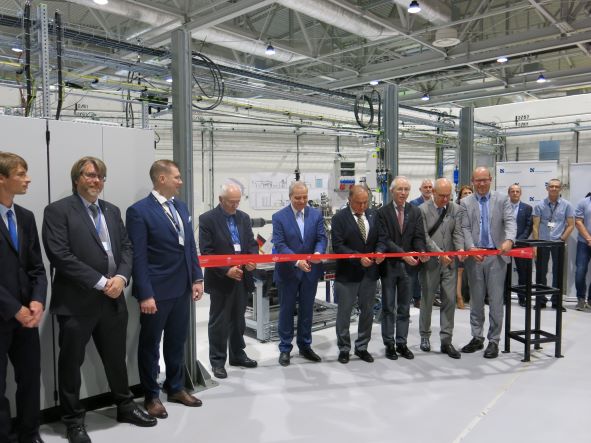
Starting from right to left: prof. Alexander Prange (Hochschule Niederrhein), dr Thomas Grünewald (Hochschule Niederrhein), prof. Stanisław Kistryn (Jagiellonian University), prof. Marek Stankiewicz (SOLARIS, JU), dr Michael Groß (Consul General of Germany), Prof. Josef Hormes (University of Bonn). Further dr Alexey Maximenko (SOLARIS), dr Henning Lichtenberg (Hochschule Niederrhein), Marcel Piszak (SOLARIS).
ASTRA beamline and its team
The ceremony in the experimental hall highlighted the deep commitment and excellent cooperation between the beamline construction specialists. It is impossible to mention everyone who contributed to the creation of this new research infrastructure, but the thanks delivered by Prof. Stankiewicz were directed to everyone actively involved in the design and construction of the beamline.
The ASTRA line was specifically designed for XAS (X-ray absorption spectroscopy) measurements in the X-ray range known as the "tender energy range." Research conducted on the beamline will contribute to developments in fields such as materials science, physics, chemistry, biomedicine, and environmental studies. The beamline opens up opportunities for cooperation with the rubber, agricultural, chemical, and cosmetic industries.

